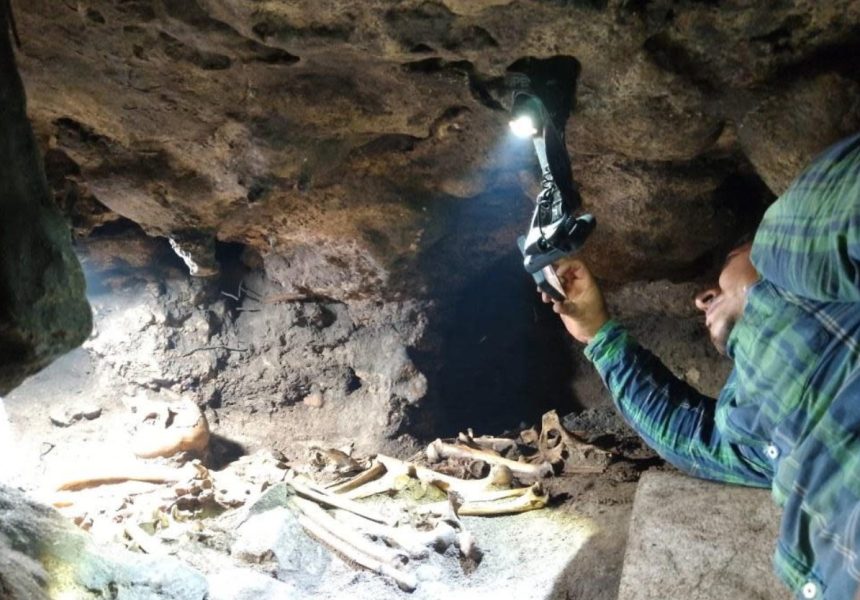This week, while doing research at a Mayan burial site in Mexico, researchers discovered a sealed-off cave that had human skeletons and the remains of over 20 different animal species, including many reptiles, bloodsucking bats, and tiger sharks.
A news release from the National Institute of Anthropology and History in Mexico states that the research is being carried out at Tulum by the federal Ministry of Culture.
While attempting to build a new passage connecting the temples, researchers discovered a cave inside a walled part of the site that was blocked by a big boulder. A little sea snail that had been adhered to the rock with stucco at the cave’s entrance further indicated that the Mayans had shut the cave.
After removing the boulder, the archaeologists studying the cave found that it was “literally splitting” a human skeleton in half. They discovered that the building included at least two tiny rooms, each around nine feet by six feet and sixteen inches high. According to the news release, “so far, eight burials have been recorded” within those rooms.
Due to the climatic conditions inside the chambers, the researchers stated that the majority of those graves were adult ones and that the remains recovered were “in good condition”.
In labs connected to the National Institute of Anthropology and History, the bones are being examined.
Where the burials had taken place, the researchers discovered “a large number of skeletal remains” of animals in addition to the human bones. A domestic dog, bloodsucking bats, a deer, an armadillo, many birds, reptiles (including a sea turtle), and fish (such as barracuda and tiger sharks) were among the species. There were also the remnants of mollusks, amphibians, and crustaceans.
According to experts, some of the bones bore signs from cuts, while others had been shaped into objects like fan handles or needles. According to experts, this is “characteristic of the area.”
In the rooms were also discovered ceramic pieces connected to the interments.
Due to the cramped workspace, “nearly nonexistent” illumination, high humidity levels, and cave-like temperatures, doing research within the chambers has been challenging. According to the news release, insects that live in the cave “complicate the activities” of the archeaology team.
According to the news release, experts have been able to conserve the cave and its archeological materials with the use of advanced technology, such as high-resolution photography and laser scanning. Using such instruments, researchers will be able to produce “a high degree of detail and precision” 3-D models that will enable them to provide virtual tours of the cave’s interior.
According to authorities, research in the cave will go on for the remainder of the year.















